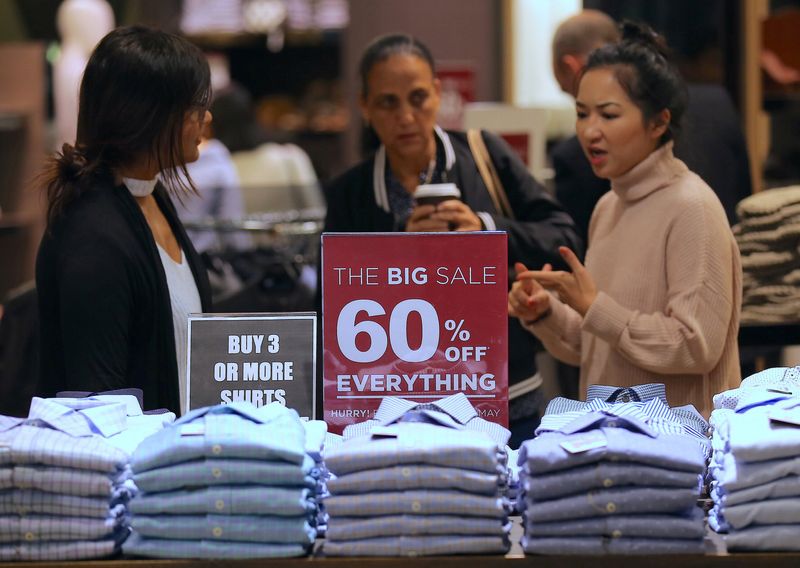By Stella Qiu
SYDNEY (Reuters) - Australia's economy stayed stuck in the slow lane in the June quarter as stiff borrowing costs and stubborn inflation squeezed consumers, leaving government spending as the main driver of growth.
Data from the Australian Bureau of Statistics on Wednesday also revealed that domestic price pressures were still running high, underscoring the central bank's reluctance to cut rates anytime soon even though markets are wagering on a December policy easing.
Real gross domestic product (GDP) rose 0.2% in the second quarter, unchanged for three straight quarters, and was just under market forecasts of 0.3%.
Annual growth slowed to 1.0% from 1.3% the previous quarter, lows last seen during the 1990s recession, barring distortions from the pandemic.
For the quarter, household spending, which accounts for half of GDP, actually fell 0.2% to drag on growth, as people cut back on trips abroad. The savings rate stayed subdued at 0.6%.
"The economy is lacking a clear engine of growth. Tight policy settings have successfully reined in demand, but inflationary pressures are yet to be completely tamed," said Sean Langcake, head of macroeconomic forecasting for Oxford Economics Australia.
"Income tax cuts and consumer subsidies will aid momentum in the second half of the year. But any improvement in activity will be unspectacular."
The downturn has been largely engineered by the Reserve Bank of Australia which hiked interest rates to a 12-year high of 4.35% in an effort to curb demand and price pressures, but underlying inflation remained high at 3.9% last quarter.
Productivity - the measure of output per hour worked - dropped 0.8% in the quarter. The result might be worrisome for the RBA as its forecasts on inflation to return to the target band of 2-3% in 2026 were centred on a pickup in productivity.
Treasurer Jim Chalmers described the GDP figures as "soft and subdued", but said they were in line with expectations as government spending, primarily on health, boosted the economy.
WAITING FOR GROWTH
The RBA expected economic growth to pick up to 1.7% in the fourth quarter, which assumed two strong quarters in the second half of the year, although evidence so far is scant that the expected rebound in consumer spending is materialising as households saved most tax cuts.
Retail sales were already flat for July in an indication that large-scale tax cuts were yet to boost spending, and card data for August from Westpac showed just a gradual pickup, suggesting fiscal support is only having a muted impact on demand.
Financial markets are still pricing in a 90% probability of a rate cut in December, even though policymakers have all but ruled out an easing this year.
Indeed, measures of prices in the GDP report were also on the high side, with inflation in domestic demand running at 4.2% for the year.
Terms of trade fell 3% due to falling commodity prices.
All this inflation has been a boon for nominal GDP, which expanded 4.4% in the year to June. Stripping out the effects of inflation, however, per capita GDP fell 0.4% in the quarter, the sixth straight quarter of declines.

"Given the current growth trajectory and against a backdrop of stubborn inflation and subdued consumer spending, it’s not entirely clear where the rebound in growth will come from, barring pre-emptive RBA rate cuts," said Tony Sycamore, analyst at IG.
(This story has been corrected to fix the annual growth rate for Q1 to 1.3%, not 1.2%, in paragraph 4)